Act I: Burnaby Lake – April 2020
My birding partner and I were walking along the Burnaby Lake trail—can’t remember exactly, but it was somewhere on the south side—when we stumbled upon this little beauty sitting by the side of the trail. Not singing, not even cheeping, just chilling. I excitedly snapped a couple of excellent pictures, and then… spent the next two and a half years yearning for another chance. White-throats are uncommon in the Lower Mainland, and though I saw other birders’ photos, the birds themselves kept eluding me. Until…
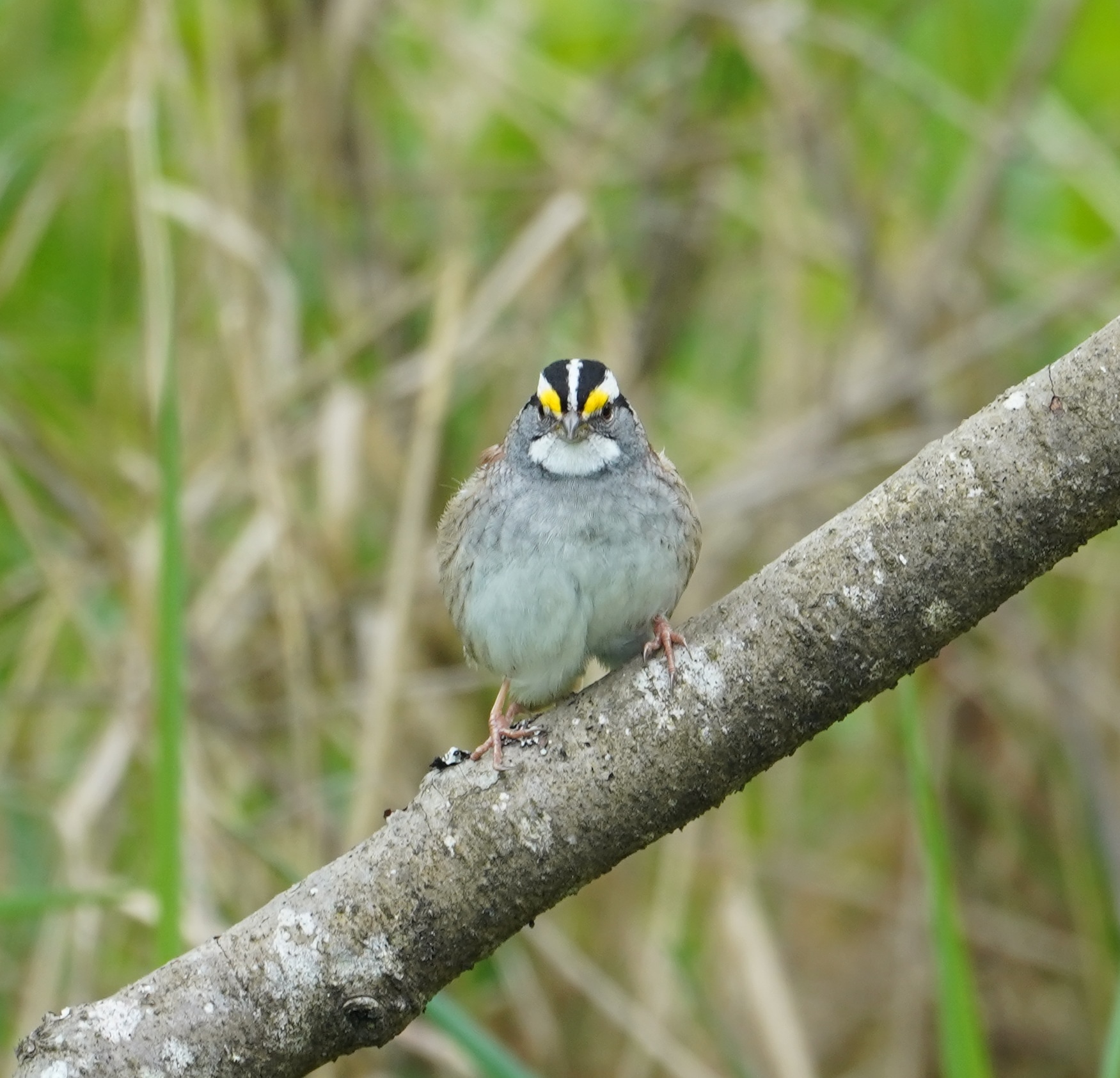
Act II: Piper Spit – October 2022
I’d been hearing that a White-throated Sparrow was hanging around Piper Spit for a week or so, so over the Thanksgiving long weekend, I went out to Piper Spit on three separate days in the hopes of catching it in the act. I saw Wilson’s Snipes and a Virginia Rail, plus the usual assortment of ducks, shorebirds and blackbirds, but still no white-throat!
Except…
Except another birder pointed out that I was surrounded by juvenile white-throats, which I’d dismissed as juvenile white-crowns or golden-crowns depending on the angle!
I hope you forgive my confusion, though, because the three species really are super similar, especially as juveniles. Golden-crowns stand out more since their heads are coloured dark gold, but the pattern is similar to this one here, which likewise has the same colours as white-crowns’ head bands.
Another cool difference is the three-toned beaks: yellow for the lower mandible, a deeper orange for the upper mandible, with a black tip just for funsies.
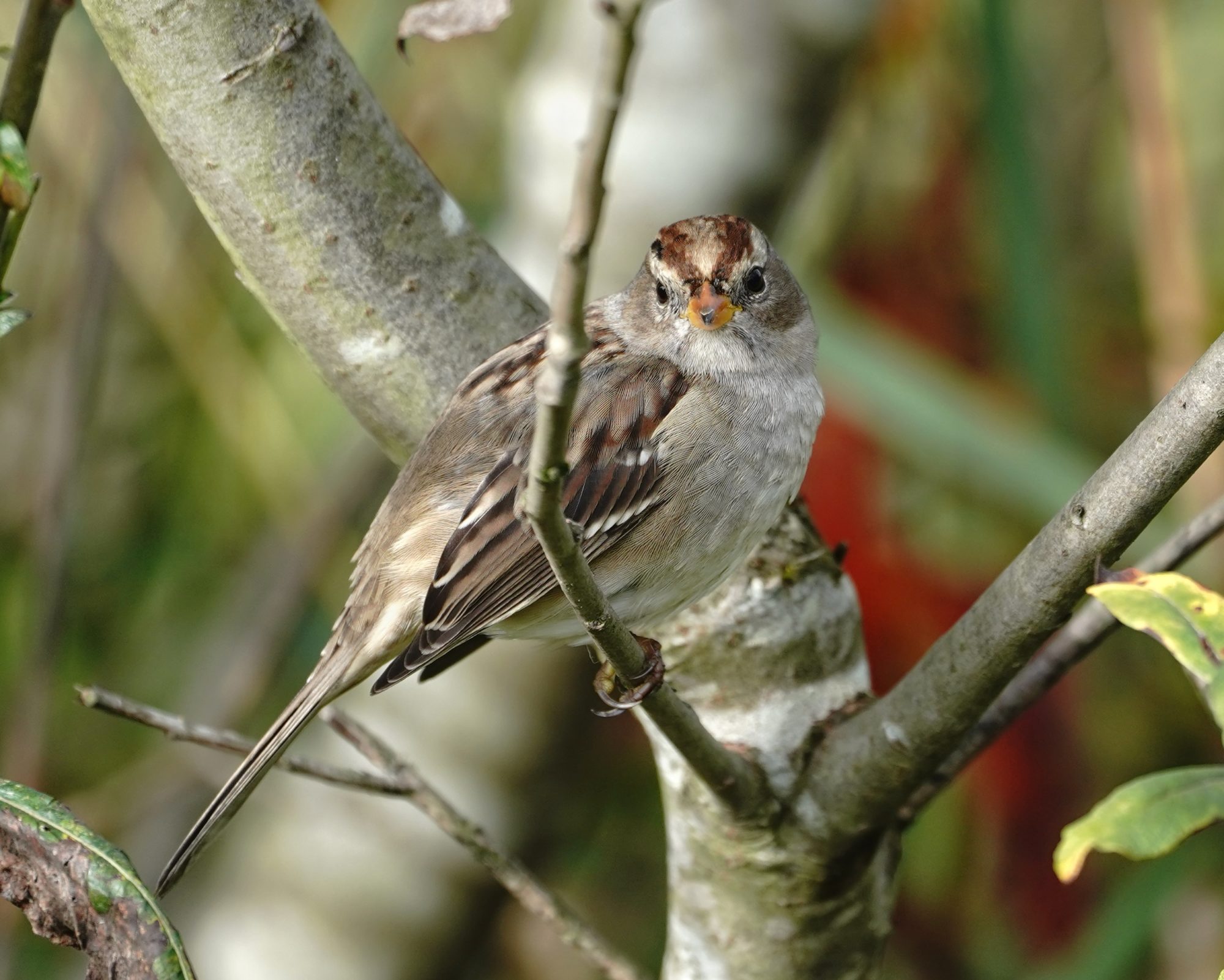
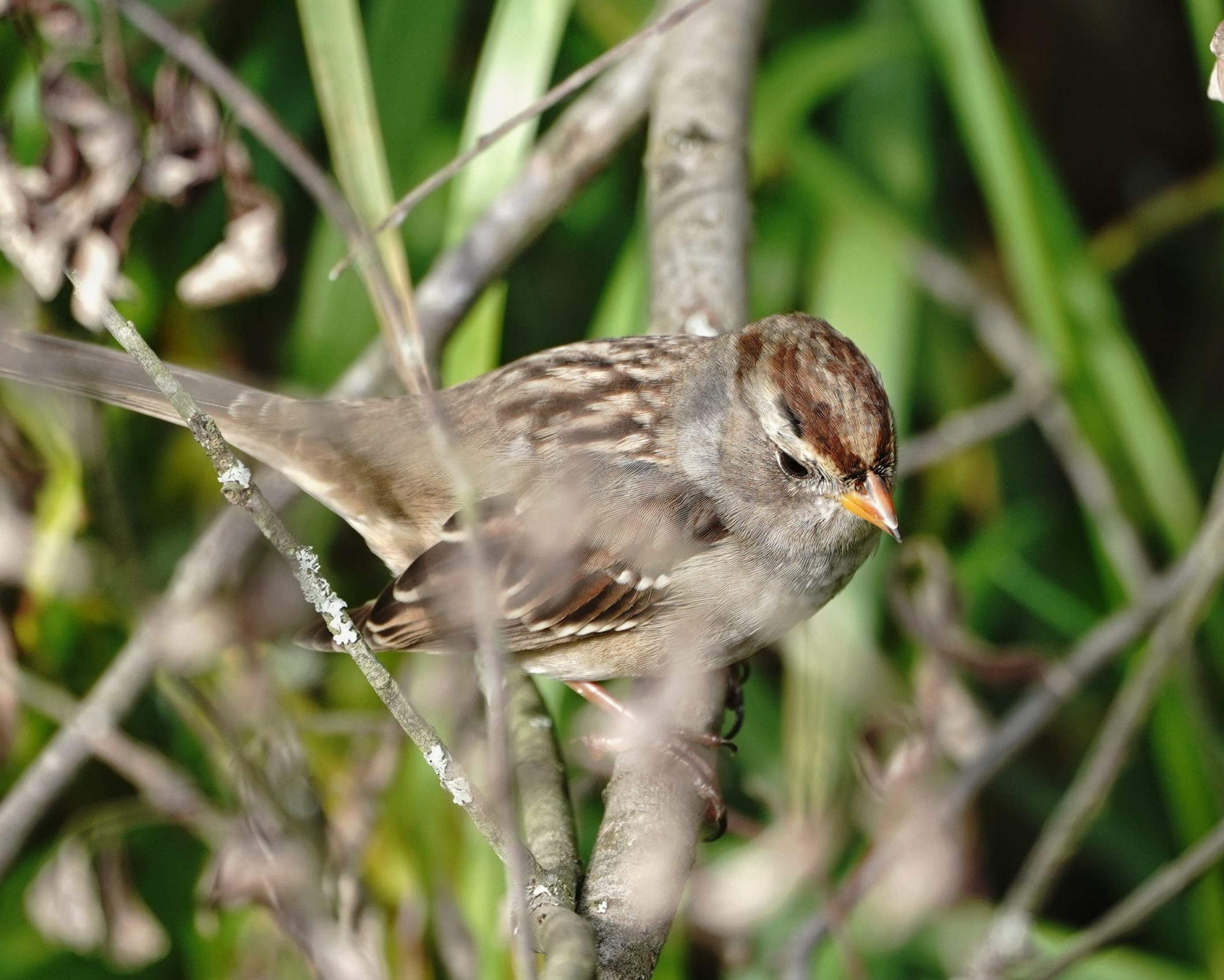
There was an adult present, presumably parent to these juvies. I only saw it for a few moments, and could only manage a mediocre shot. I wanted to wait for another opportunity, but the blackbirds—which had left for a few hours on their mysterious blackbird errands—were starting to take over the spot. I was forced to call it quits.
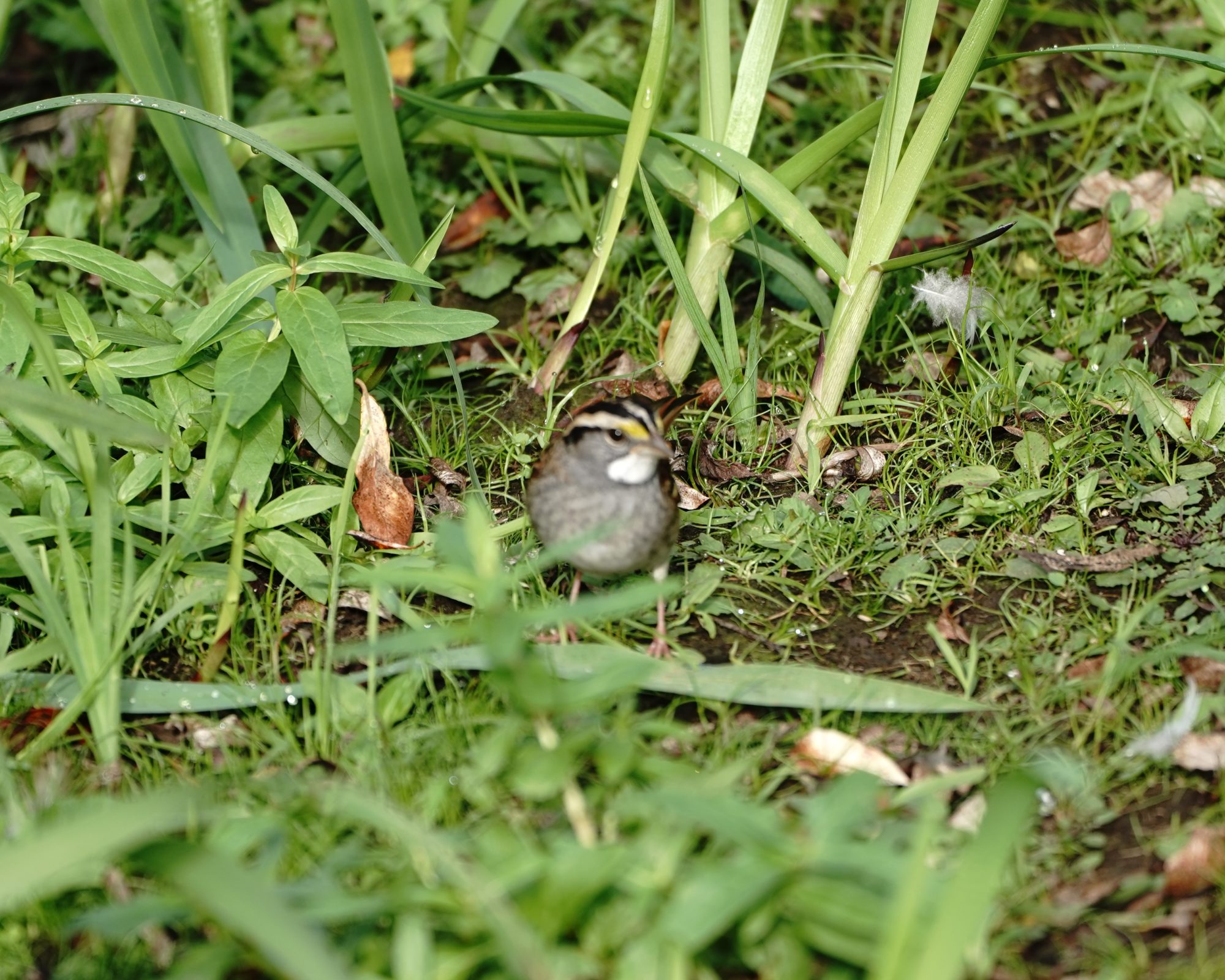
Still, these were by far my best photos. The encounter gave me hope that better photos would come someday, I just had to be patient!
Act III: Lost Lagoon – October 2023
It was a typical Friday afternoon at Lost Lagoon. My eye was caught by some little birbs foraging by the side of the trail and—
Wait.
Wait wait wait.
Was that a White-throated Sparrow?!?
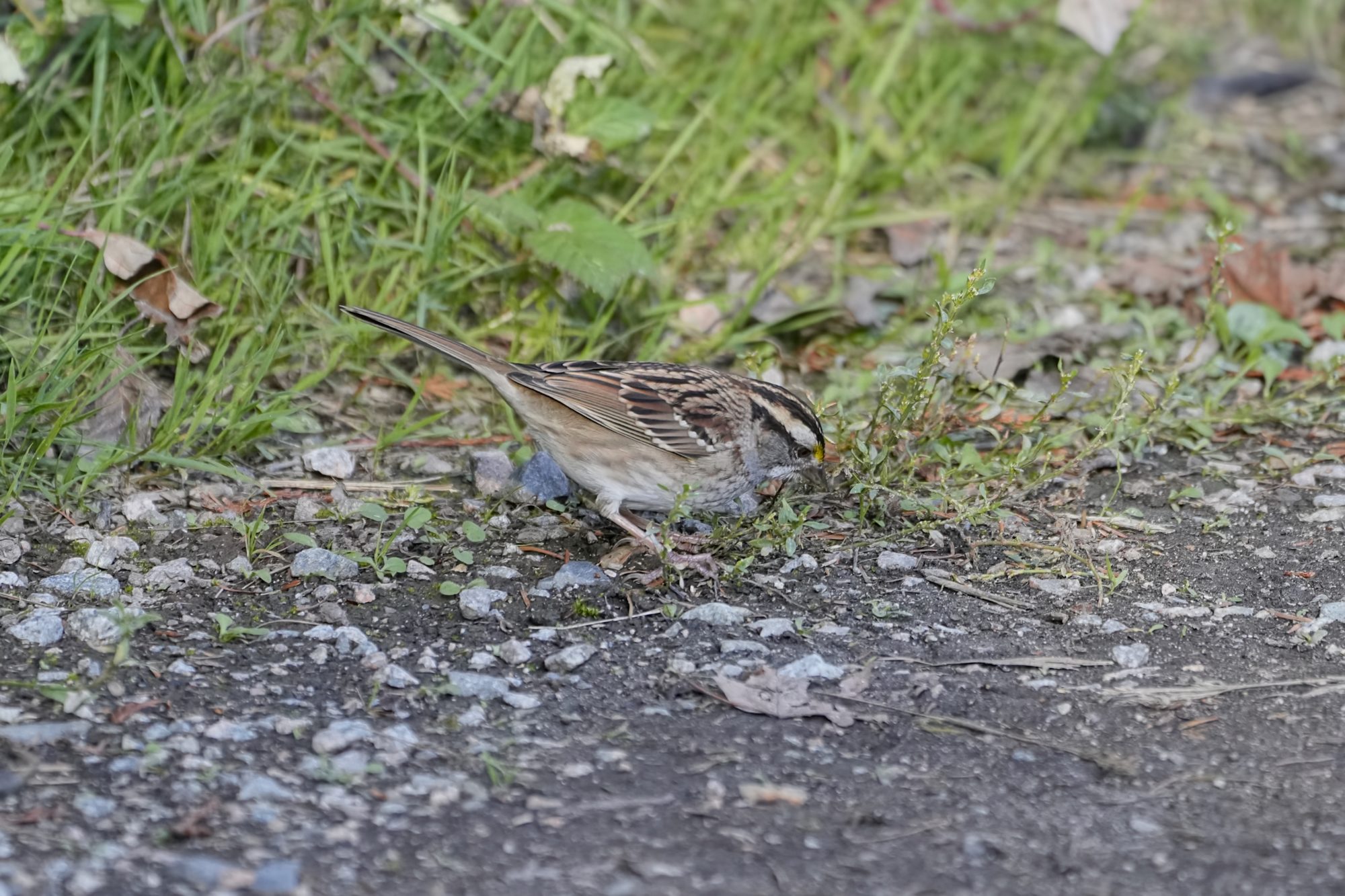
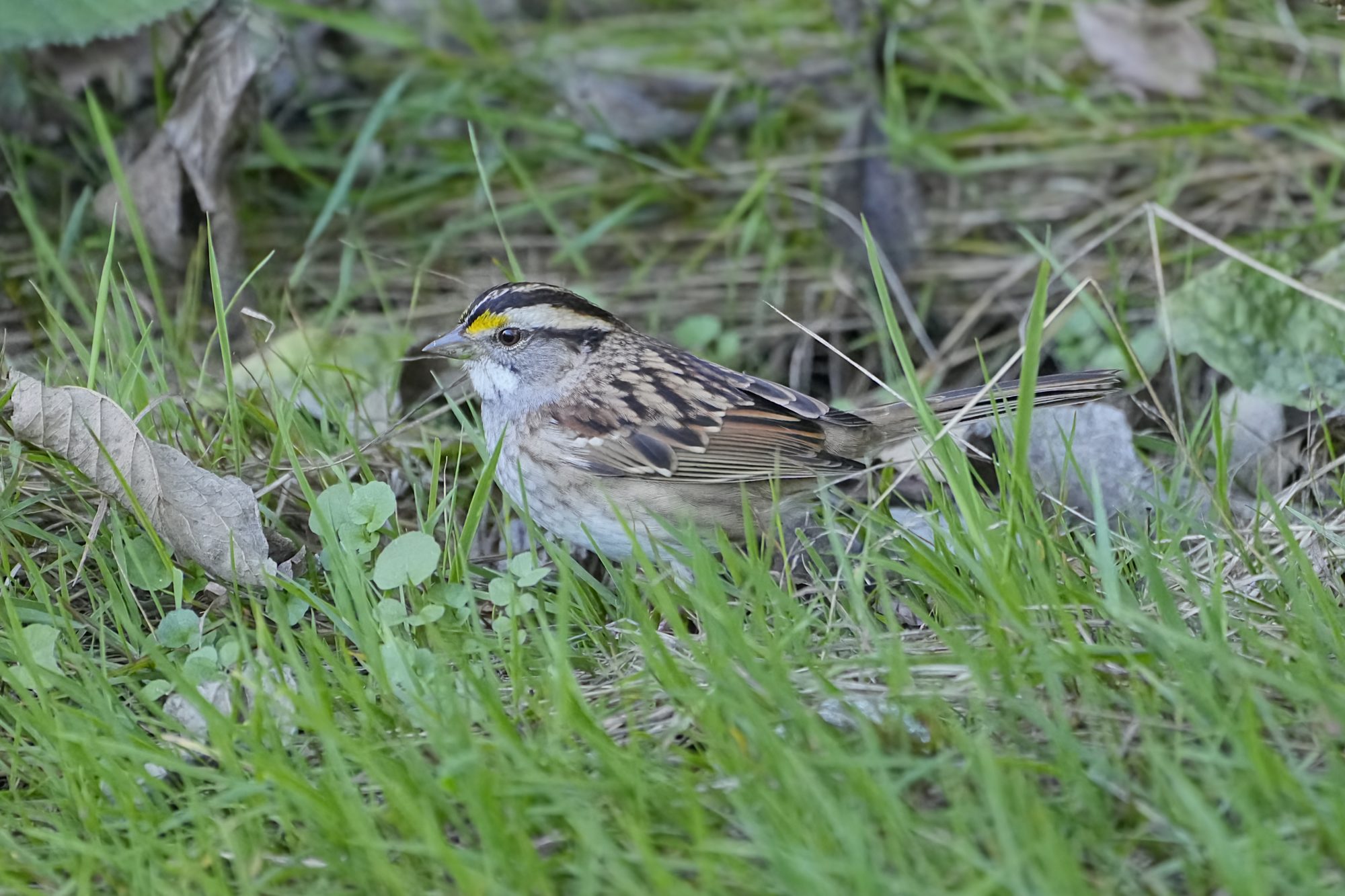
It was! And it had babies with it! Three of them, to be exact. I couldn’t tell them apart so these photos may or may not show all three. Let’s imagine they do.
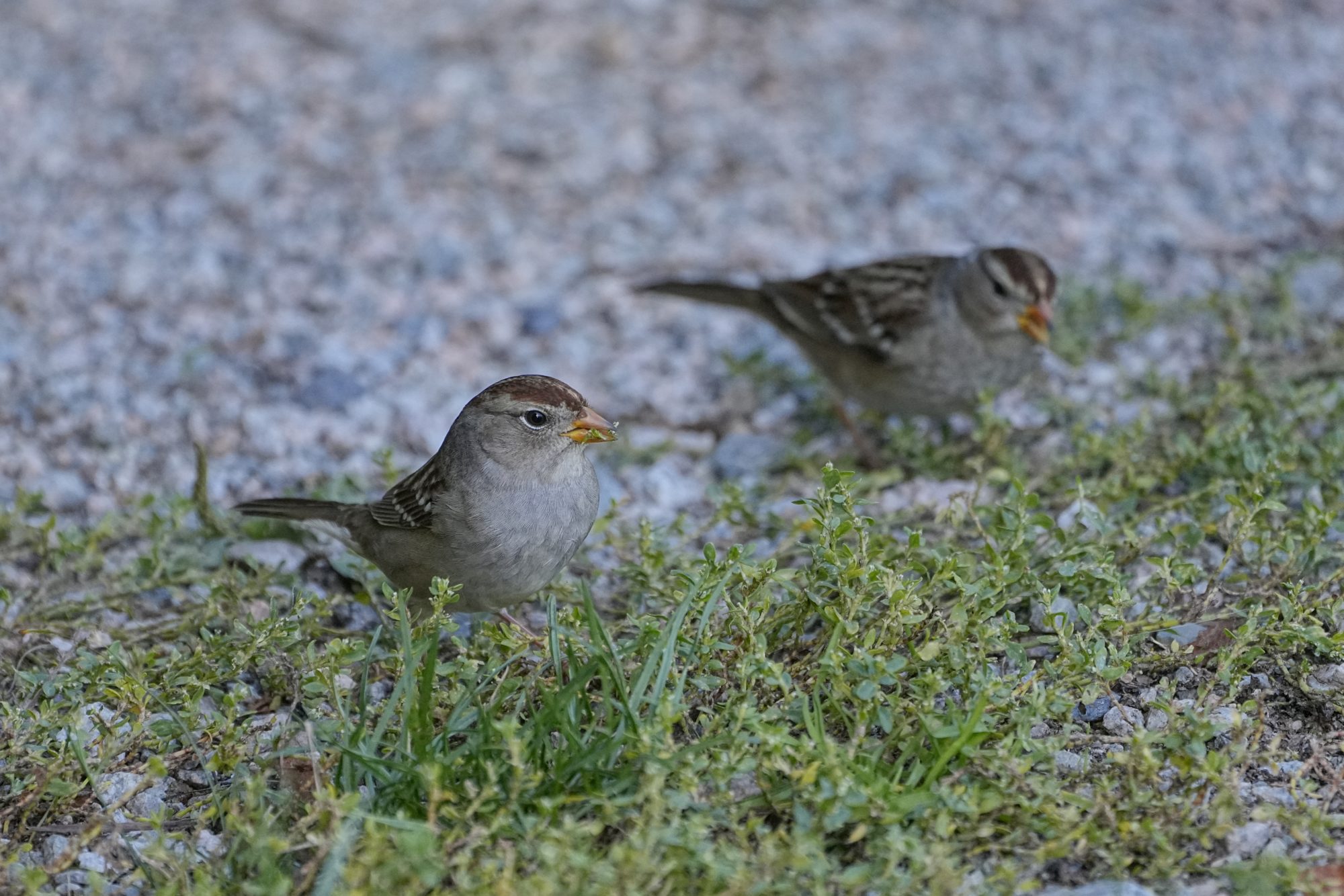
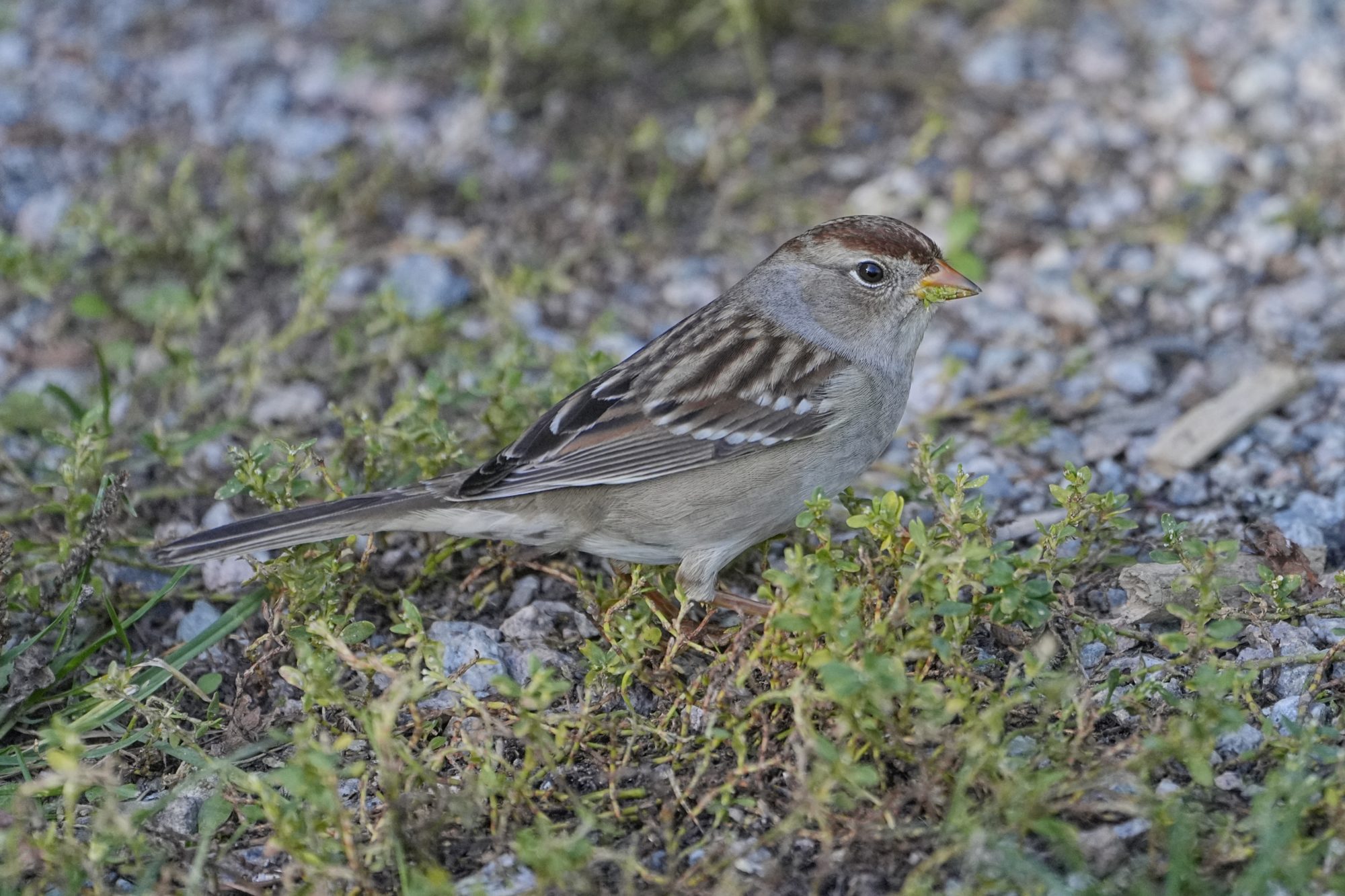
The light wasn’t 100% ideal, and it was a bit of a crossroads so a bunch of people kept walking by and the birds kept flying away but they kept flying back which is what really matters, right? After some time they flew off deeper into the bushes and wouldn’t come back. So that was the end of that.
One more thing: I observed that the juveniles were out on the trail foraging away, while the adult stayed very close to cover. Thinking about it, that’s the same behaviour as last year: I could get great shots of the young’uns because they were out in the open, but the adult was not so obliging.
Act III.5: Lost Lagoon – two days later
On Sunday, I headed back to Lost Lagoon, and saw them again, pretty close to the same location.
Maybe???
This time there were four birbs instead of three, and no adult in sight. Also, I was told by an experienced birder that these are actually white-crowns. I’ll just say it, though: I’m not convinced! Sure, this guy knows way more about birds than I do. And sure, white-crown and white-throat babies look pretty much identical. But I’ve never seen white-crowns so deep in Stanley Park before, so that’s suspicious. And two days after a white-throat family was in the same area? Very suspicious.
Then again, maybe those were actually white-crown babies adopted by a selfless white-throat philanthropist. Could happen!
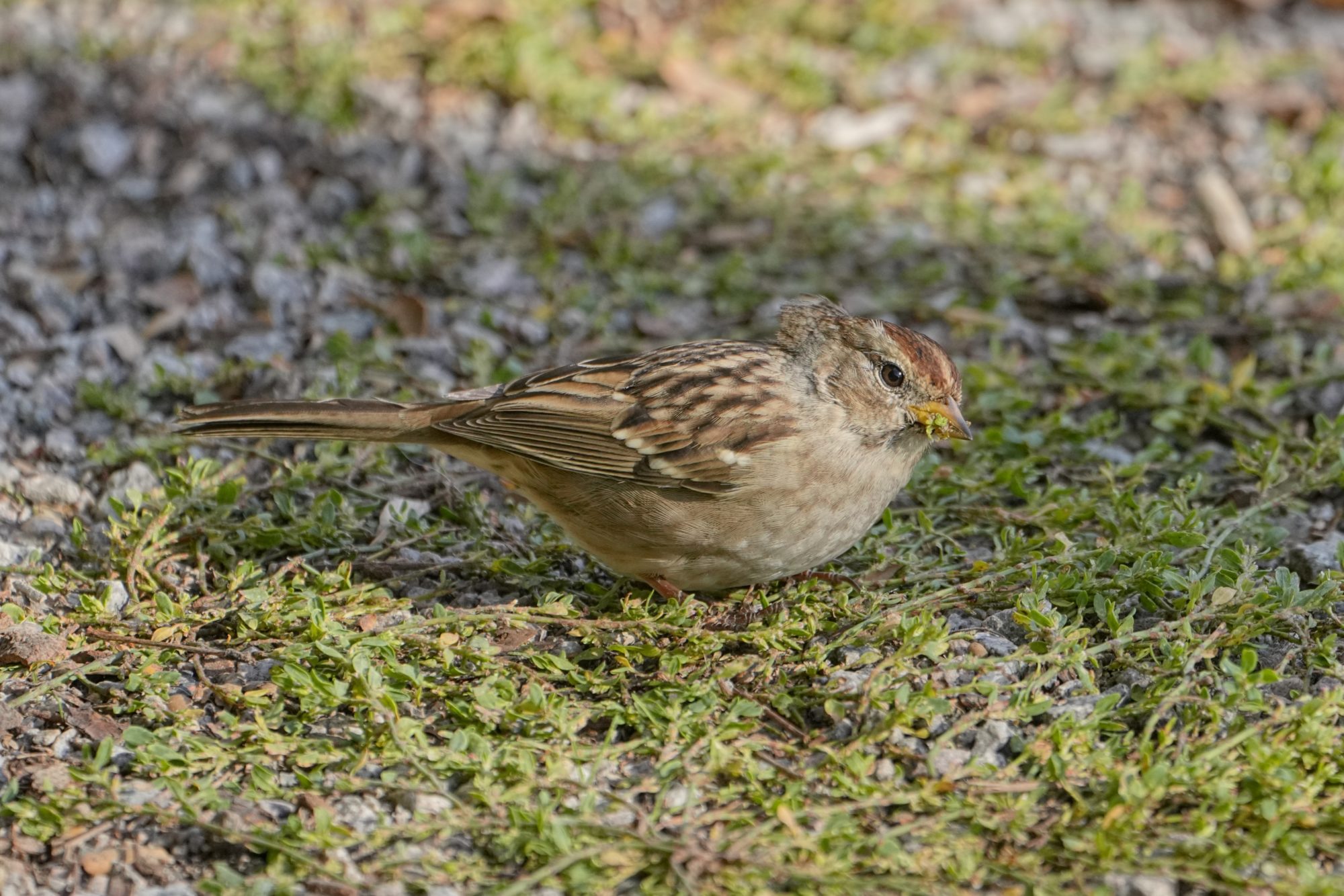
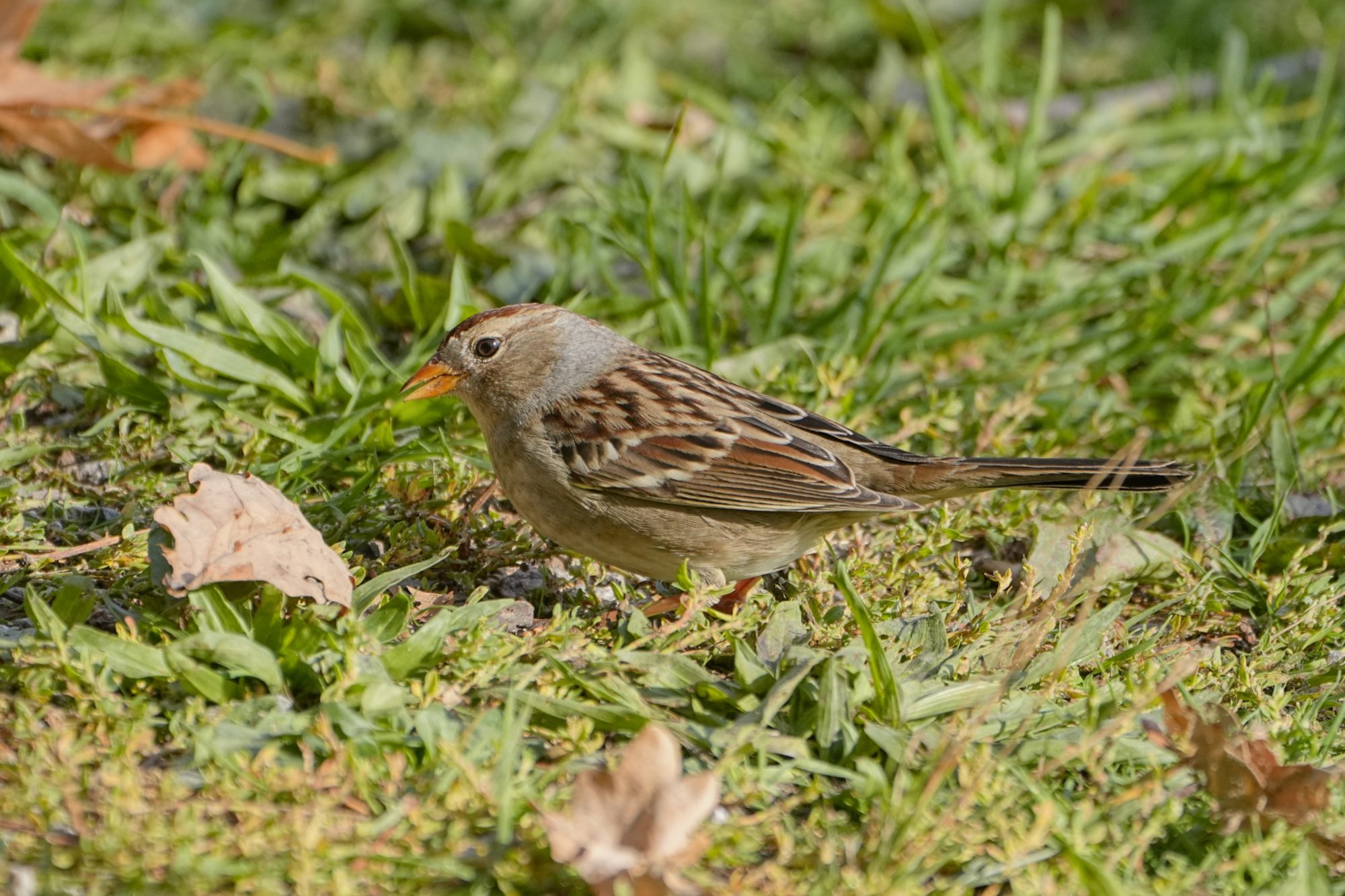
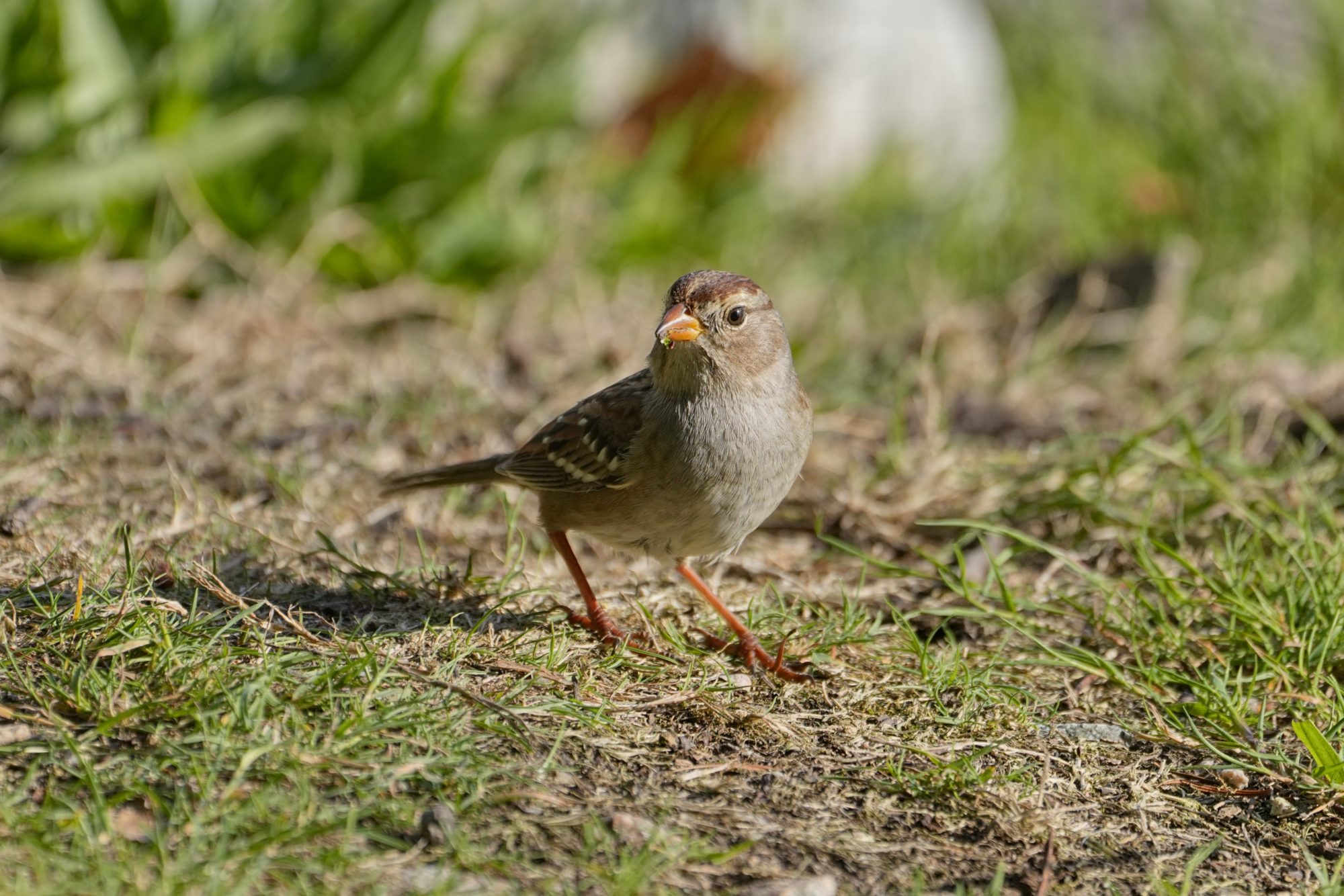
It’s a mystery, for sure. And it just goes to show how bird ID’ing can be a pain, especially when dealing with juveniles of closely related species. But I’m learning!